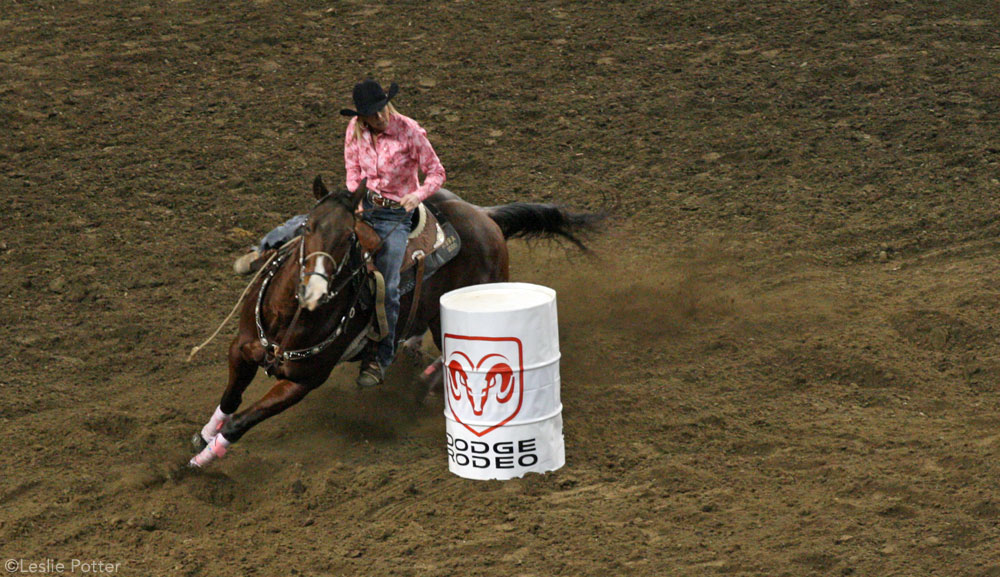
The speed of barrel racing makes it exciting for competitors and observers alike. Every second counts, and even the smallest mistakes will cost you. A fraction of a second can make all the difference between winning and losing.
1) Improve Your Riding Skills
Some barrel racers focus all of their attention on getting their horse across the finish line as fast as possible. Instead of honing their basic riding skills, they develop bad habits to stay in the saddle so they look like they’re flopping all over the place in their runs. Even though sloppy riders may do OK on a good horse, they need to have a solid foundation to produce winning times.
Riding well will keep you from bouncing in the saddle, yanking on your horse’s mouth or interfering with his balance. Because barrel racers ride at full speed, you must have a solid position and excellent balance to stay anchored in the saddle. During the run, you can help your horse by leaning slightly forward with your upper body and pushing down in the stirrups to get your weight off your horse’s back. Be sure to sit in the saddle and keep your heels down during the turn.
During your schooling sessions, practice proper body alignment. When seated in the saddle, you should be able to envision a straight line from your ears through your shoulders, hips and heels. This position helps both you and your horse stay balanced. Hold your hands low and even with each other near the horn; your contact with the bit significantly decreases when you hold your hands too high and far from the horn. To check your position, ask a friend to photograph or videotape you while you’re riding.
Learning to be a great rider takes a lot of practice. A riding instructor can help you perfect your position and hone your barrel racing strategy.
Further Reading
Riding the Run
2) Prep Your Equine Athlete
A barrel horse is an athlete. He must use every muscle in his body to run and make tight turns. To perform well and not get hurt in the process, your horse needs to be in top physical shape. Even though barrel racing requires speed, workouts aren’t about running fast. Trotting is an efficient way to get your horse in shape, as is riding uphill at the walk. Ride your horse three to six times a week to keep him fit. Make sure you build up his strength slowly over many weeks, and periodically have your vet verify that your horse is healthy enough for each increasingly difficult workout. Asking your horse to work too hard too soon can cause injury.
Further Reading
Barrel Essentials
3) Create a Supple, Responsive Horse
In addition to strength and stamina, your horse needs to be supple. The faster he turns at each of the three barrels without knocking them down, the better your time will be. The quality and speed of your turns depend on how well your horse bends. Wide or stiff turns will add seconds to your run and may cause your horse to tip barrels. Practice a lot of circles and turns with your horse at home by riding figure-eights, spirals, and large and small circles. All of these exercises will help your horse learn to be responsive and supple, so he’ll be more willing and precise when you cue him for turns in a race.

4) Avoid Burnout
Don’t practice running the pattern every time you ride. Your horse will get bored with too much repetition and learn to anticipate turns rather than wait for your cues. However, you can still use the barrels for some of your turning practice to keep your horse going. For example, ride along the rail of the arena and circle each barrel as you pass it; set the barrels up in a straight line and weave in and out of them; set two barrels up for figure-eight work; or circle one barrel starting as wide as you can and spiral your circle inward. Working with cattle, trail riding or just extending your trot strides along a flat track can all add variety to your workouts.
When you do practice the pattern, start at the walk and gradually work up to the lope. You should be able to ride the pattern accurately before worrying about your speed. Practicing the pattern at different speeds also keeps your horse focused and prevents him from anticipating.
5) Pick the Pocket
When you’re running barrels, look at the pocket—the area just in front of and around the barrel where you slow down to make your turn. Horses go where their riders are looking, so if you focus directly on the barrel, you’re more likely to run into it. Once you round one barrel, look up at the next barrel’s pocket.
When you get to each pocket, put weight in your heels and say “whoa” to tell your horse it’s time to slow down and prepare for the turn. If your horse is unable to control his speed through turns (known as rating), then practice stopping, walking or jogging when you get to the pocket, and then pick up the lope again on the opposite side of the barrel. Slow down at a different barrel each time so your horse doesn’t learn to anticipate it.
6) Cue Up
Don’t forget about your hands when you’re fine-tuning your horse’s skills. Most barrel racers ride two-handed, with one rein in each hand. As you ride up beside a barrel, hold on to the horn with your outside hand so you can push against it to keep yourself down in the saddle. If you wrap your palm around the front of the horn, you’ll pull yourself forward and out of the saddle.
Turn your horse’s nose around the barrel with your inside hand, but don’t make the mistake of pulling your hand up or toward the barrel. Instead, pull your hand back toward your hip or your pant pocket. This should tip your horse’s nose toward the barrel, and the rest of his body will follow his nose into the turn. Your horse should bend his entire body around the barrel, not just his neck, so remember to also use your inside leg when you ask for each turn.
If your horse leans toward the barrel or gets too close to it, add pressure just behind the cinch with your inside leg by turning your toe toward the barrel and pressing the back of your calf to your horse’s side. Don’t forget to keep your heels down.
You can also use your legs to nudge or bump your horse between barrels if he’s slow, but don’t kick so hard that your legs lose complete contact with the saddle and your horse; this will only make it hard for you to keep your balance. Instead, help your horse run fast between barrels and on the way to the finish by leaning slightly forward and keeping your hands low and quiet.
7) Don’t Overdo It
It’s important to warm up your horse before you enter the arena by doing 20 to 30 minutes of walk, jog and lope work, with a few turns and circles. After your race, you’ll need to walk your horse for another 20 minutes or more to let him cool down and relax his muscles. Don’t ride your horse more than necessary to thoroughly warm up on show day; otherwise, he’ll be too tired to perform well, and you will risk injuring him for his next barrel competition.
Micaela Myers is the author of The Horse Illustrated Guide to Trail Riding and The Horse Illustrated Guide to Trailering of the “Simple Solutions” series (BowTie Press) and KNACK Leg and Hoof Care for Horses.
This article originally appeared in the May 2009 issue of Horse Illustrated. Click here to subscribe.

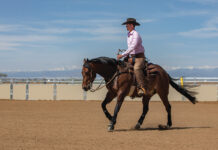
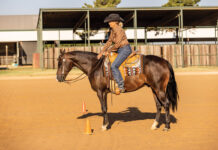
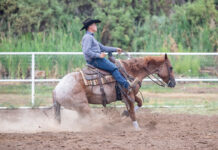

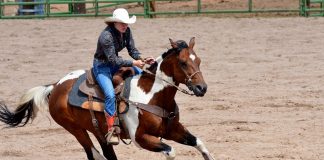

GREAT ADVISE!!!!!!!!!!!!!!!!
this was very helpful..i applied what it said about the reins dureing the turn and it improved her turns..great advise
That was very helpful great advise love it
Very helpfull, I dont barrel race,but I am always looking for ways to improve my riding skills,and this was put into ways I can understand it.
thank You
This article was helpful.
This was very helpful as my horse has been very bored lately. I really needed to find things to do without getting her bored of barrels and poles patterns
this is going to help me vary much. as a matter of fact im going to print out this article and give it to my riding instructor
A friend has a horse that started rearing up last week right before hes fixing to run, hes fine when others are in there warming up their horses. He didn’t do it last year at all. He runs great once he gets into the arena but he has to be ponied in.